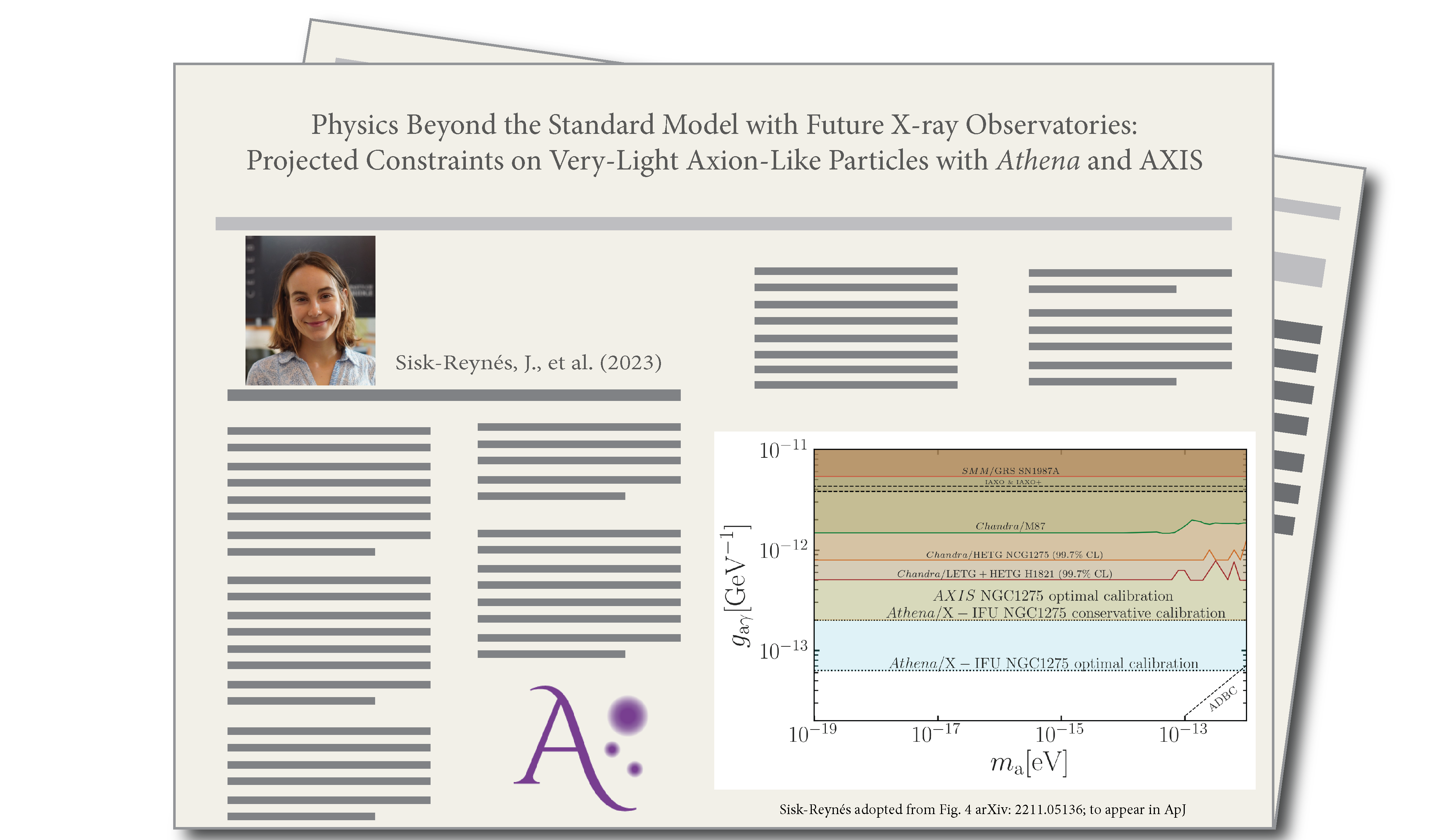
Physics Beyond the Standard Model with Future X-ray Observatories

By Júlia Sisk-Reynés
Our work is centred on the notion that photons and ALPs (which are generic string theory predictions and popular Ultra-Light Dark Matter candidates) interact (or “mix”) in the presence of external magnetic fields. This means that, if in a suitable location of parameter space, the X-ray photons associated with cluster-hosted bright AGNs should undergo conversion into light ALPs (masses <1e-12 eV) as they travel through the magnetised cluster line-of-sight. Our group found one of the tightest constraints to date on the photon-ALP coupling for these light ALPs using high-resolution Chandra Grating spectroscopy of the bright quasar H1821+643. In the latter, we inferred an upper bound on this coupling based on the absence of spectral distortions attributed to (non-resonant) photon-ALP mixing in the quasar spectrum. These findings are described in Sisk-Reynes et al. (2022), MNRAS, 510, 1.
Given improvements in spectral resolution and collecting area from current missions, Athena was shown to be expected to push limits on ALPs from Chandra by Conlon et al. (2018), MNRAS, 473, 4. In our paper, we assess the possible impacts that detector miscalibration could have on ALP bounds inferred from Athena/X-IFU observations of NGC 1275, given the energy-dependent effects it may induce. Interestingly, we found the exciting prospect of largely recovering Athena’s sensitivity to ALP physics if a machine learning framework is used to disentangle between ALP-induced and mis-calibration-induced spectral distortions. We believe the use of similar techniques may be relevant to other science groups and are particularly excited for ALP searches with Athena.

